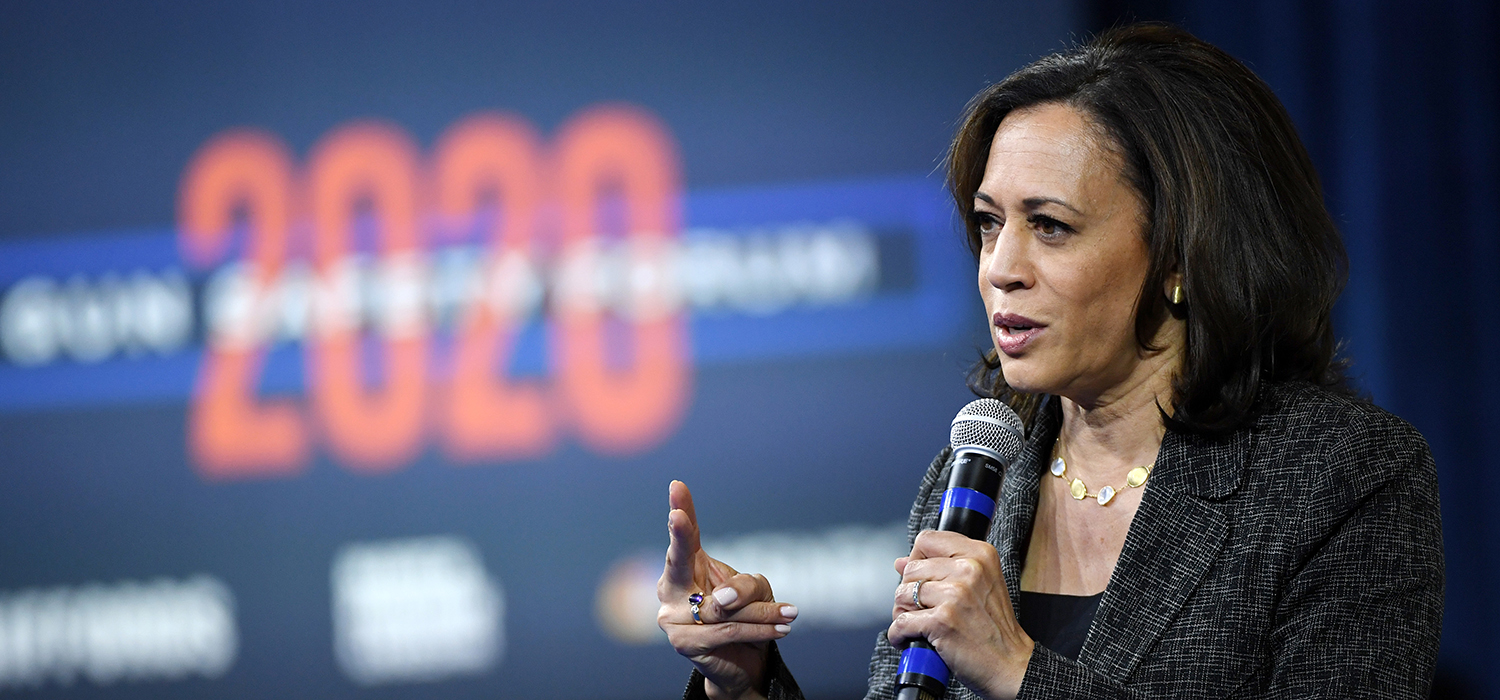
<p>Democratic presidential candidate Sen. Kamala Harris (D-CA) speaks in Las Vegas, Nevada on October 2, 2019. (Photo by Ethan Miller/Getty Images).</p>
Presidential candidates have prioritized announcing new proposals to increase the financial security of a broad swath of Americans. These proposals include tax credits for workers, student debt relief, and universal basic income.
One such proposal, from Senator and presidential candidate Kamala Harris (D-CA), is the LIFT (Livable Incomes for Families Today) the Middle Class Act, which would provide a tax credit matching up to $3,000 of earnings for single people and $6,000 for married couples. This proposal, which would cost about $3 trillion over the 10-year budget window would provide benefits to many groups, including families with children. The proposal is also a component of her presidential campaign’s “children’s agenda.”
In a departure from existing tax credits that largely benefit families with children at home, LIFT would provide substantial benefits to 42 million students and workers without children at home (referred to as “childless workers” for tax purposes). Roughly 4 million of these childless households are people younger than 25, meaning they’re too young to qualify for the earned income tax credit (EITC).
As a result, the LIFT Act would especially benefit younger adults (ages 18–24), an age group that is often overlooked in targeted income support from federal programs, despite being key participants in the economy and while experiencing the financial instability that often characterizes early adulthood. In total, the LIFT Act would provide about $360 billion in benefits to about 12 million households in this age group over the next decade.
How existing tax credits leave some behind
The EITC is the most significant tax credit supporting low- and moderate-income workers. But 97 percent of its benefits flow to families with children. Childless workers are eligible for a relatively small (just over $500, maximum) benefit that phases out at low income levels. Childless workers must also be at least 25 years old but no older than 64 to qualify. As the average age of first-time parents increases, more workers ages 18 to 24 are left out of this benefit, including many students.
The LIFT Act’s rules allow childless workers and students to receive significant benefits from the new credit, including those ages 18 to 24, through two provisions: setting the minimum qualifying age for the credit to 18 and allowing low-income students to count their Pell grants as earnings that could be matched by the credit.
The proposed credit begins to phase out once a single person’s income reaches $30,000 or a single parent’s or married couple’s income reaches $60,000. Benefits from the proposed credit would be highly progressive. Just under two-thirds of all benefits from the LIFT Act would go to households in the bottom 40 percent of the income distribution.
Benefits for those 18–24 years old, people who generally have lower incomes than older workers, would be even more targeted; almost four-fifths of the LIFT Act’s benefits to this group would go to these workers in the bottom 40 percent of the income distribution (see figure below).

The LIFT Act largely follows the design of the very successful current-law EITC. Its benefits are concentrated among the lowest-earning workers, which would move millions of people out of poverty each year.
By allowing workers as young as 18 to qualify, providing a substantial benefit to childless workers, and allowing low-income students with Pell grants to benefit, the LIFT Act would be an important source of support for those 18–24 years old.
Let’s build a future where everyone, everywhere has the opportunity and power to thrive
Urban is more determined than ever to partner with changemakers to unlock opportunities that give people across the country a fair shot at reaching their fullest potential. Invest in Urban to power this type of work.